Ever noticed a shiny film on new lumber, known as mill glaze? Puzzled if sanding can help remove it? Dive in as we unravel the mystery of mill glaze removal!
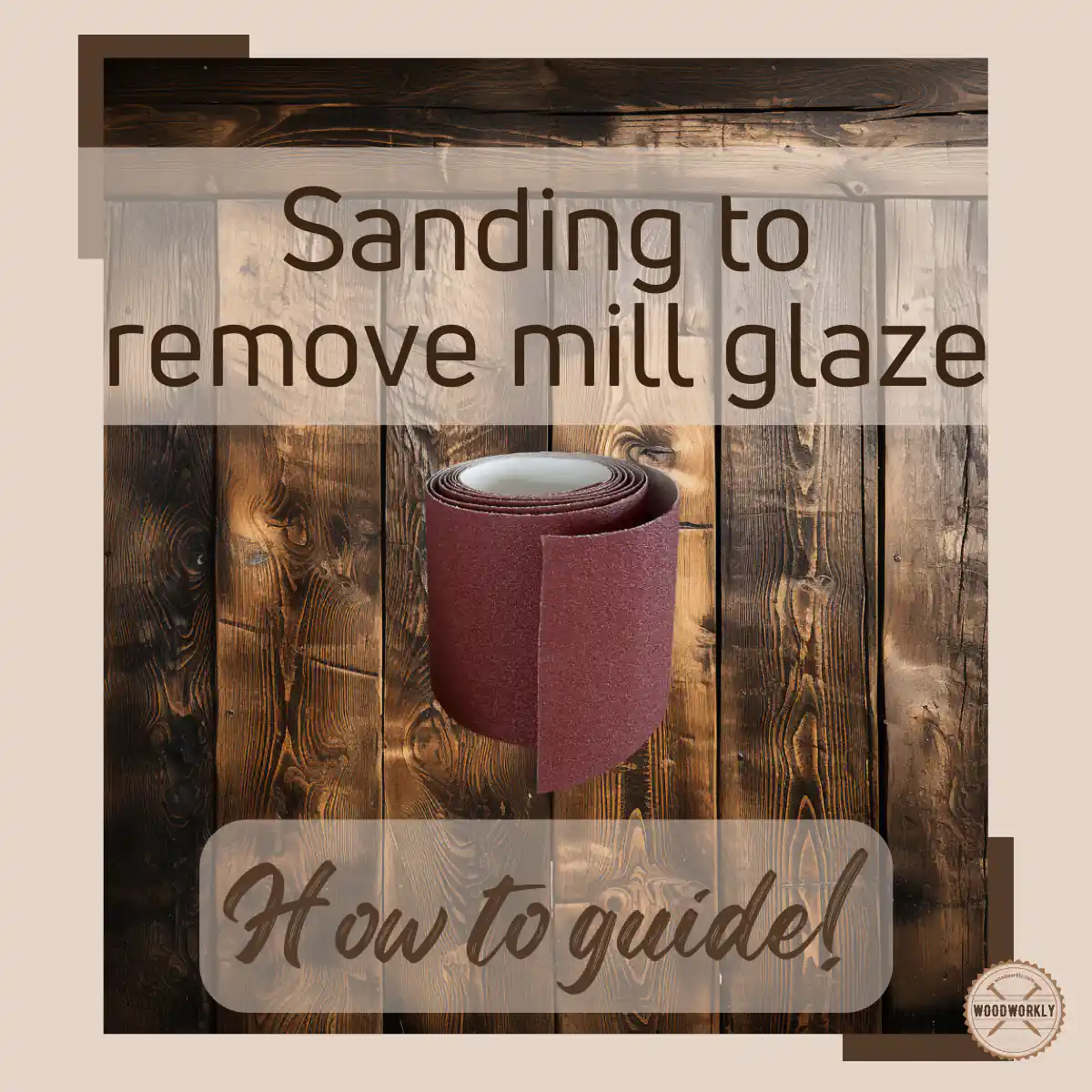
Mill glaze is a glossy type shiny film surface that produces on newly milled timber during the milling production process.
It has the tendency to repel stains on wood.
There are lots of questions that I hear all the time regarding the removal of mill glaze. Especially when sanding.
So, I dig into that, and here’s what I found about, Does Sanding Remove Mill Glaze?
Yes, Sanding removes mill glaze. Light sanding is required to remove mill glaze. Use 80 grit sandpaper to break through the mill glaze of wood. Sand along the direction of the wood grain lightly because mill glaze will be easily removed with a slight touch.
But that’s just a quick snapshot.

Let’s find out actually how does sanding removes mill glaze, and what type of sanding paper should you use, and I’ll share my personal experiences with you to make your next woodworking project perfect without this issue.
Let’s jump in!
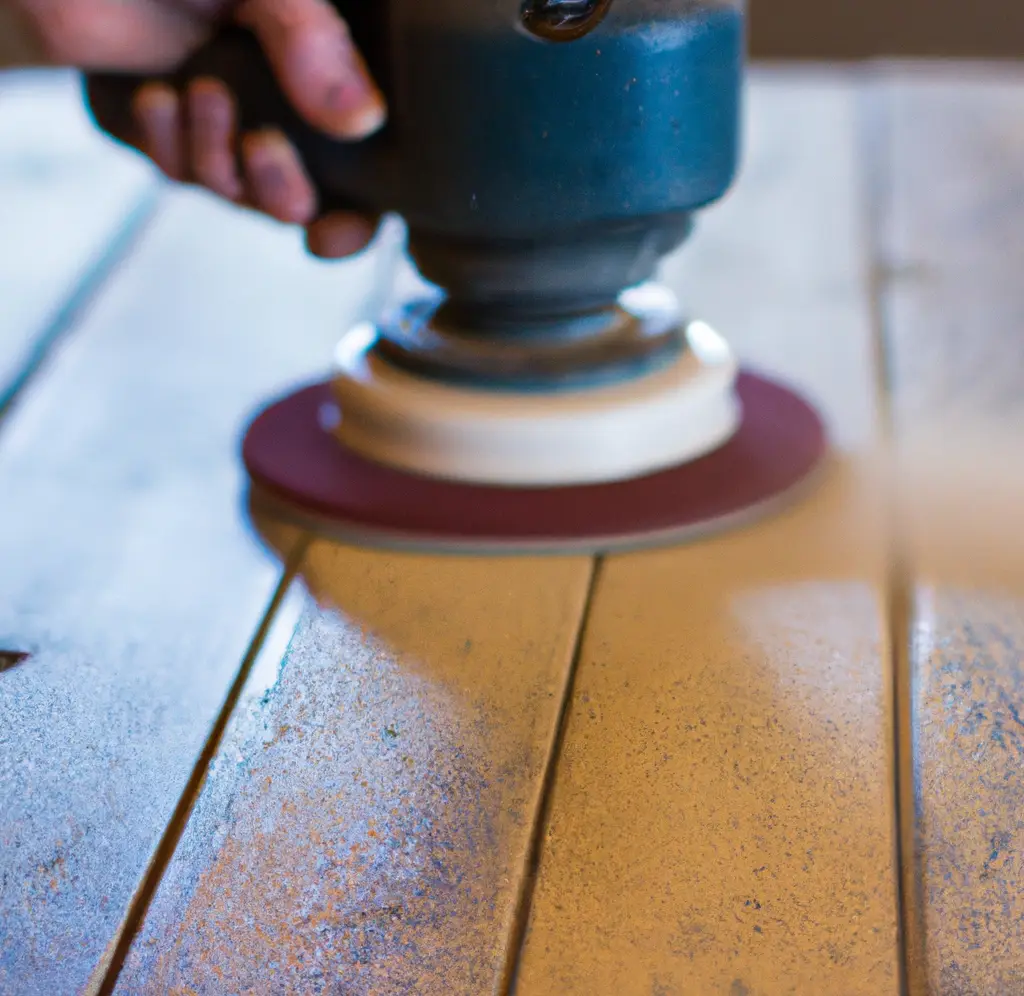
Can Mill Glaze be Sanded Off?
Yes, mill gaze can be sanded off by light sanding along the direction of the wood grain without damaging the wood surface.
There are two possible ways to remove mill glaze from the wooden surface.
- Light pressure washing by wood deck cleaner
- Light sanding
Here we are mainly focusing on how to mill glaze sanded off. By doing light sanding above the wooden surface, we are able to remove the mill glaze and fuzzy residue both at once.
This should be done gently. It is very much important because if you do the sanding with overpressure, it can directly damage to the wood occur scratches and there’ll be no use of wood at all.
Light sanding will brighten and clean the wood and allow for the opening of pores in the wood as well.
Opening of wood’s pores is pretty much useful because it will allow and support the absorption and penetration of oil-based finish.
This will protect the wood from algae, mildew, and mold attacks.
After the sanding is done, make sure to use a blower or vacuum to remove all the sawdust and fuzzy residue from the surface.
Because even a small quantity of sawdust can cause a lot of problems, especially when staining.
Sawdust left on the surface will prevent the stain from absorbing to the wood and cause an uneven finish.
This causes decreasing the durability and the performance of the final output product.
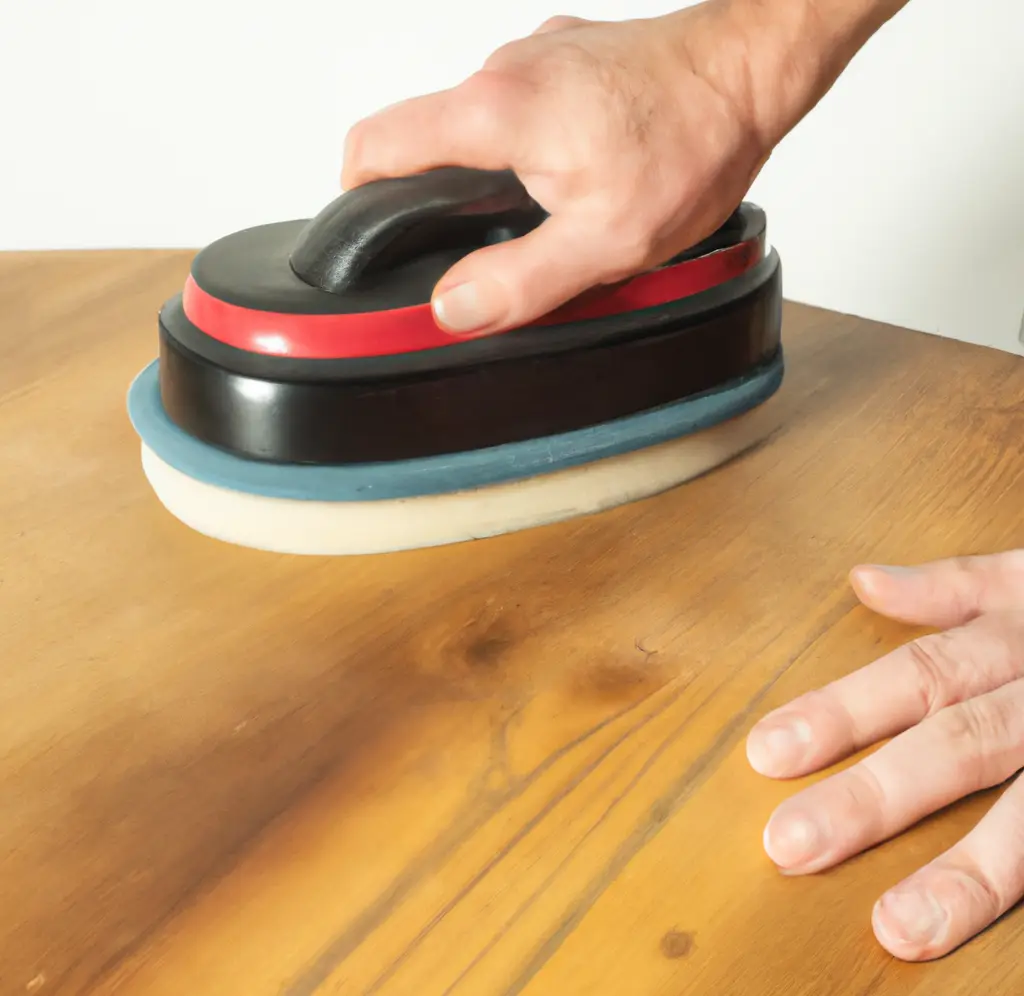
Test Your Wood for Mill Glaze
The presence of mill glaze can determine yourself by a simple water test.
First, wet the wooden surface with water drops or by garden hose and observe the water on top of the wooden surface.
Mill glaze is a thin glossy film above the wooden surface. So, if the water drops you applied beads up instead of spreading out or absorbing to the wooden surface, mostly there is a mill glaze film on your wood.
Simply you just have to check whether the wood is preventing the water from absorbing or not.
If the water is penetrating inside of the wood, basically there is no mill glaze and you’re good to go.
If it’s not penetrating inside, a light sanding is recommended.
I highly recommend you following this simple test once every 2-3 months to keep your wood in good condition for future woodworking projects.
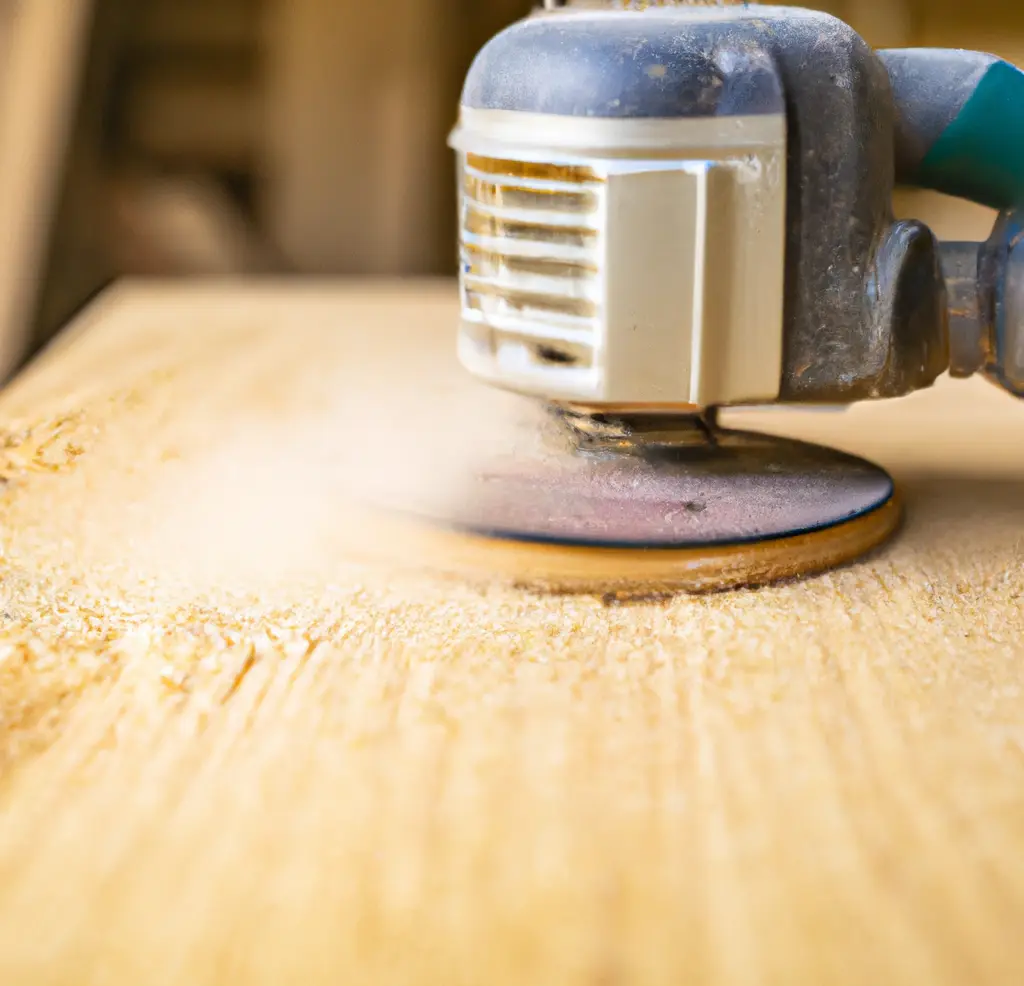
Select Proper Sandpaper to Eliminate Mill Glaze
Selecting suitable sandpaper is a challenging and the most important task when it comes to mill glaze.
If you mistakenly select the wrong grit size, the whole wood can turn into a sponge with no use.
According to my experience, anything finer than 80 grit is perfect to eliminate mill glaze. Mostly for my wood, I generally use 80-grit sandpaper to remove the mill glaze.
80 grit is fine for good penetration. It will break through the mill glaze of wood.
Make sure to sand with the grain to leave zero sanding marks on the wooden surface.
Given below the grit sizes of sandpapers with their most suitable application.
Hope it’ll give an idea of how things work, and help you to select the perfect grit size for mill glaze.
| Sandpaper Grits | Application |
|---|---|
| Extra Course 20-30 | Fast removal, Roughing up the surface |
| Course 40-50 | Fast removal of rough material |
| Medium 80-120 | Remove stain, Remove Mill glaze, prepare for finishing |
| Fine 150-180 | The final step before finishing |
| Very fine 220-240 | Sanding between coats of stain |
| Extra fine 280-320 | Touch-ups |
| Superfine 360-600 | Remove small marks |
As you can see higher the grit number, the smaller the grains, and also, the finer the sandpaper grit.
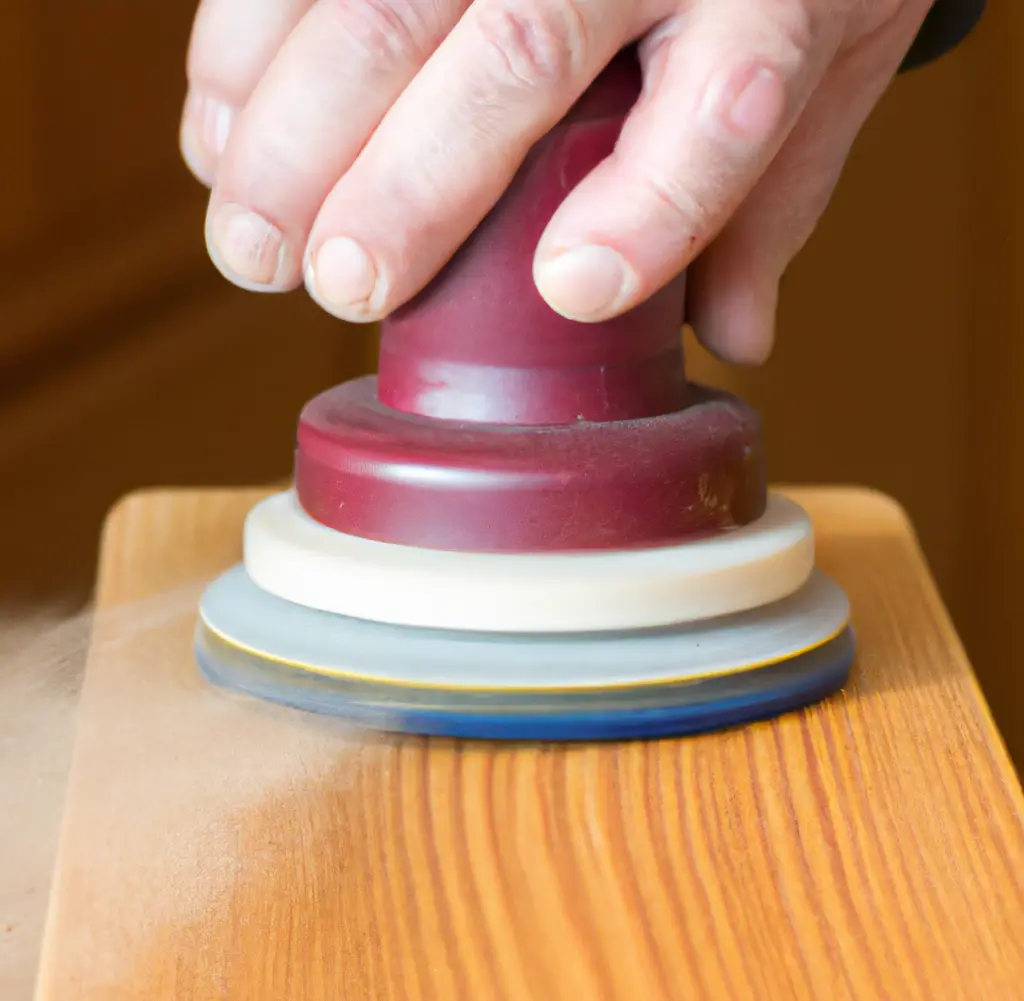
Sanding to Eliminate Mill Glaze
First of all, you need to be equipped with the following before starting the sanding.
- For fast stock removal – sanding belt
- To sand contoured surface – flexible sanding
- To smooth the surface – sanding disk
- For hand sanding – sandpaper sheet (80 grit)
Secondly, you need to prepare the workspace for sanding to eliminate mill glaze.
Because if there is any glue residue on the wooden surface it’ll stop the stain from penetrating the wood surface.
Also, make sure to clean the whole wooden surface, with a microfiber cloth to remove dust. This is important to sand uniformly throughout the surface.
When you do the sanding, make sure to sand parallelly with the wood grain to avoid making scratches. Sanding should be done very lightly because mill glaze will be easily removed with a slight touch of 80 grit sandpaper.
Applying excessive pressure can damage and can make scratches as well.
You can repeat the sanding until you feel satisfied with its appeal. After this process is done, you should get a smooth bright surface with no mill glaze.
Once you have done the sanding, clean the whole wood with a microfiber cloth until there is no sawdust left on the surface. Because any leftovers can make uneven finish or paint in the end.
As a summary, here’re the steps you need to follow when removing mill gaze,
- Inspect the Lumber: Begin by examining the wood for the presence of mill glaze, which usually appears as a glossy film on the surface.
- Prepare your Equipment: Gather your sanding tools. Depending on the size of your project, you may need a power sander or hand sander along with medium-grit sandpaper.
- Sanding: Start sanding the wood surface using even, back-and-forth motions. Always sand along the direction of the wood grain to avoid scratches or uneven surfaces.
- Inspect and Repeat: After the first round of sanding, inspect the wood. If the glossy appearance still exists, repeat the sanding process until the mill glaze is entirely removed.
- Clean the Wood: Once the sanding is complete, clean the surface to remove any dust or debris.
- Final Preparation: After cleaning, allow the wood to dry thoroughly before applying any sealant, paint, or stain. If needed, use a wood deck cleaner/stripper and brightener to ensure the best possible surface for the finish to bond.
Now I hope you have a better understating from A to Z, how to sand any wood to eliminate the mill glaze and to sand with even color.
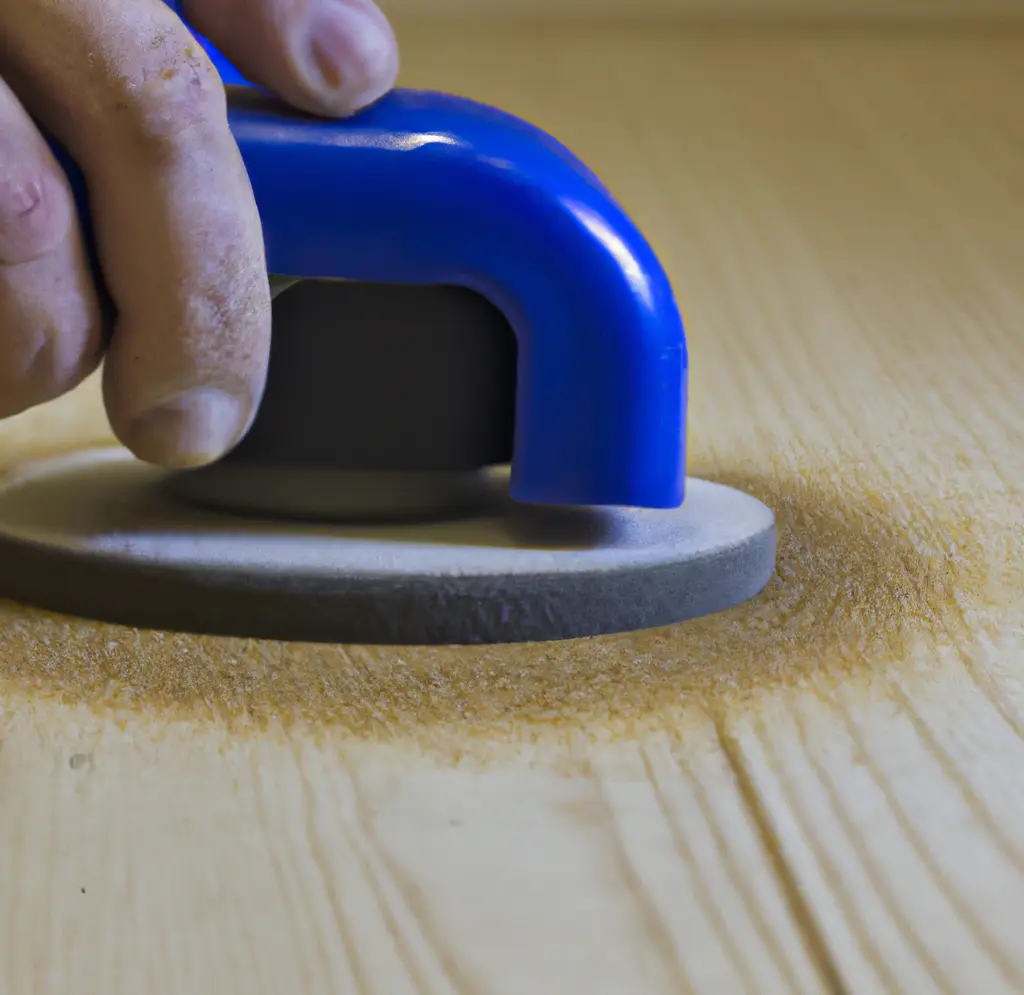
Let’s have a look at the wood types we commonly use, to get an idea of the removal of mill glaze from them.
How Do You Remove Mill Glaze From Pressure Treated Wood?
Apart from cleaning and sanding the pressure-treated wood to remove mill glaze, we can use wood deck cleaner with light pressure washing.
Here before the light pressure washing, I recommend you scrub the wood with a stiff brush to clean the surface. After the scrubbing is done you can use light pressure washing which will easily remove the mill glaze.
I have to say this method is so much easier to remove mill glaze compared to the sandpaper method. Also, it is good for health due to no sawdust is release throughout the process.
After the light pressure washing the wood is kept drying out.
But there are some occasions I have noticed even after the wood is dried out completely, some number of fuzzy residues can remain on the surface.
If you experienced this, a light sanding is recommended to remove fuzz.
According to my research, this happens due to mistakes done in light-pressure washing.
Overall, here are the steps to remove mill glaze from pressure-treated wood:
- Use a Deck Cleaner/Stripper: Start by applying a specialized wood deck cleaner or stripper, which is designed to help remove mill glaze and other surface contaminants. The cleaner should be applied according to the manufacturer’s instructions.
- Scrub the Wood: If the mill glaze is particularly stubborn, you might need to scrub the wood with a stiff bristle brush. This will help to break up and loosen the mill glaze.
- Pressure Wash: After scrubbing, use a pressure washer to rinse off the deck cleaner and any remaining mill glaze. This should be done with care to prevent damaging the wood. The article suggests using a “light pressure washing.”
- Apply a Wood Brightener: Once the wood is clean, apply a wood brightener. This opens up the pores of the wood, enabling stain to penetrate as intended.
- Let the Wood Dry: After cleaning and brightening, it’s important to allow the wood to fully dry.
- Light Sanding: After drying, the article mentions there might be a “fuzzy residue” on the wood. Light sanding can help remove this, as well as any remaining traces of mill glaze.
- Stain the Wood: Finally, when the wood is dry and prepped, apply a quality stain. The article recommends an oil-based stain for best protection and longer life.
Above the same method can be applied to cedarwood and pinewood as well.
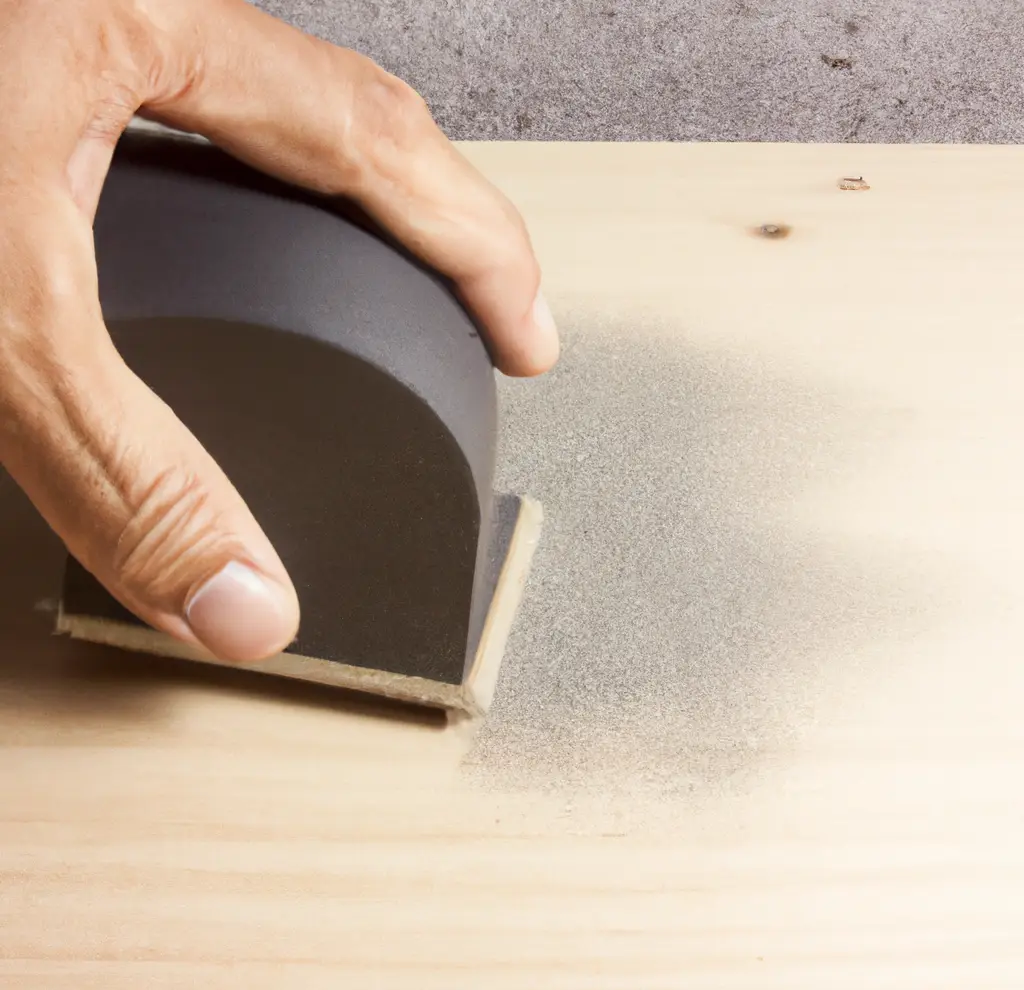
As we discussed above the best way to remove mill glaze is light sanding with 80-grit sandpaper.
When it comes to mill glaze, nothing beats sanding to eliminate it.
Hope you learned everything you wanted to know about, Does sanding remove mill glaze, and how to remove mill glaze properly to give a new look to your wood furniture.
Does Pressure Washing Remove Mill Glaze?
Yes, pressure washing removes mill gaze. Use a wood cleaner with a pressure washer to remove mill gaze and other residues from the wood surface.
First, scrub the wood surface with a bristle brush and then apply a wood stripper over the surface. then pressure washes it to remove the mill gaze completely from the wood.
Finally, add a brightener to give a fresh look to the wood surface.
Does TSP Remove Mill Glaze?
Yes. TSP removes mill gaze. First, mix one part of TSP with 3 parts of water and add it to your garden-style pump sprayer.
then spray the wooden surface until mill gaze takes off from the surface and then let it soak for 20 minutes.
Then pressure washes the surface to remove TSP completely from the wood. Then let it dry. This way you can remove mill gaze while giving an enhanced look to the wood.
How Do You Remove Mill Marks From Lumber?
To remove mill marks from lumber sand the entire surface with 80 grit or coarse sandpaper until the marks are gone.
Then, light sand with finer grit sandpaper and wipe down the surface to remove sawdust and other residues.
So, let’s answer some frequently asked questions.
FAQs
Is it necessary to sand the wood after applying a deck cleaner/stripper and a wood brightener?
While it’s not mandatory, sanding is beneficial as it can help remove any leftover mill glaze and eliminate any fuzzy residue that might form on the wood after the cleaning and brightening process.
Will sanding damage the wood while removing mill glaze?
If done properly, sanding should not damage the wood. However, it’s essential to use appropriate sandpaper and not to sand excessively, as it could potentially harm the wood surface.
Is there a particular type of sandpaper recommended for removing mill glaze?
While the article does not specify a particular type of sandpaper, it’s generally recommended to use a finer grit sandpaper (80-100 grit) for this task to avoid damaging the wood.
What is the purpose of sanding the wood after applying a wood brightener?
Sanding after brightening helps to open up the pores of the wood for better stain penetration and also removes any fuzzy residues or remnants of mill glaze, ensuring an optimal surface for staining.
Can I stain the wood immediately after sanding?
Yes, after sanding, the wood should be ready for staining. However, ensure the wood is completely dry before applying any stain.
Can I rely on sanding alone to prepare new wood for staining?
Sanding alone is insufficient for new wood preparation as it might not remove all mill glaze. A comprehensive process including cleaning, brightening, and finally sanding will provide the best results.
Can I skip sanding if the mill glaze is not visually noticeable?
Even if mill glaze is not visibly noticeable, sanding is still recommended as part of the wood preparation process to ensure optimal stain absorption and longevity.
Is sanding necessary if I allow the wood to season for a year?
Yes, even after natural seasoning, a cleaning process with a deck stripper, brightener, and light sanding is recommended to ensure optimal stain absorption and durability.
Did I Cover all you wanted to know about Does Sanding Remove Mill Glaze?
When it comes to woodworking, mill glaze is a common problem for most beginners, because it is a very special circumstance associated with milling like new cedar, and pine cupboards.
Yes, sanding can remove mill glaze, but it’s most effective when used as part of a comprehensive process that includes cleaning the wood with a deck cleaner/stripper, applying a wood brightener, and then finalizing with light sanding to ensure optimal stain absorption.
If the water doesn’t absorb to the wooden surface, simply do light sanding which will solve the problem quickly.
No need to waste your money on different chemicals available on the market.
In this article, I’ve discussed how does sanding remove mill glaze, what grit size you should use for the task, how to do a mill glaze test, and how to remove mill glaze from common wood types pine and new cedar.
Hope this article helps you to get a better understanding of how to remove mill glaze properly using sandpaper without any issue. Give it a try!